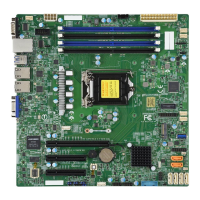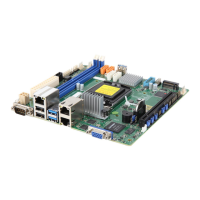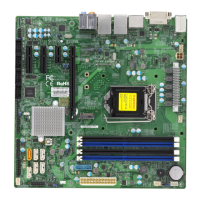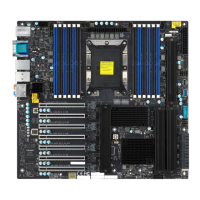Chapter 4: BIOS
87
AMT SOL Putty KeyPad
This feature selects Function Keys and KeyPad settings for Putty, which is a terminal
emulator designed for the Windows OS. The options are VT100, LINUX, XTERMR6, SCO,
ESCN, and VT400.
AMT SOL Redirection After BIOS POST
Use this feature to enable or disable legacy Console Redirection after BIOS POST. When
the Bootloader option is selected, legacy Console Redirection is disabled before booting
the OS. When the Always Enable option is selected, legacy Console Redirection remains
enabled upon OS bootup. The options are Always Enable or Bootloader.
Redirection COM Port
This feature controls which COM port displays redirection of Legacy OS and legacy OpROM
messages. The options are COM1 or SOL.
EMS Console Redirection
Select Enabled to enable Emergency Out-of-Band Management Console Redirection, which
will allow a client machine to be connected to a host machine at a remote site for networking.
The options are Unchecked (Disabled) and Checked (Enabled).
*If the item above set to Enabled, the following items will become available for
conguration:
Console Redirection Settings
Out-of-Band Mgmt Port
This feature controls which port Emergency Management Services (EMS) is allowed to
remotely manage a Windows server operating system. The options are COM1 or SOL.
EMS Terminal Type
This feature allows the user to select the target terminal emulation type for Console
Redirection. Select VT100 to use the ASCII Character set. Select VT100+ to add color
and function key support. Select ANSI to use the Extended ASCII Character Set. Select
VT-UTF8 to use UTF8 encoding to map Unicode characters into one or more bytes. The
options are ANSI, VT100, VT100+, and VT-UTF8.
EMS Bits per second
Use this feature to set the transmission speed for a serial port used in Console Redirection.
Make sure that the same speed is used in the host computer and the client computer. A
lower transmission speed may be required for long and busy lines. The options are 9600,
19200, 57600, and 115200 (bits per second).
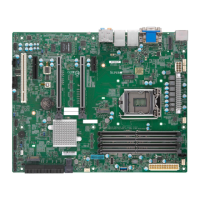
